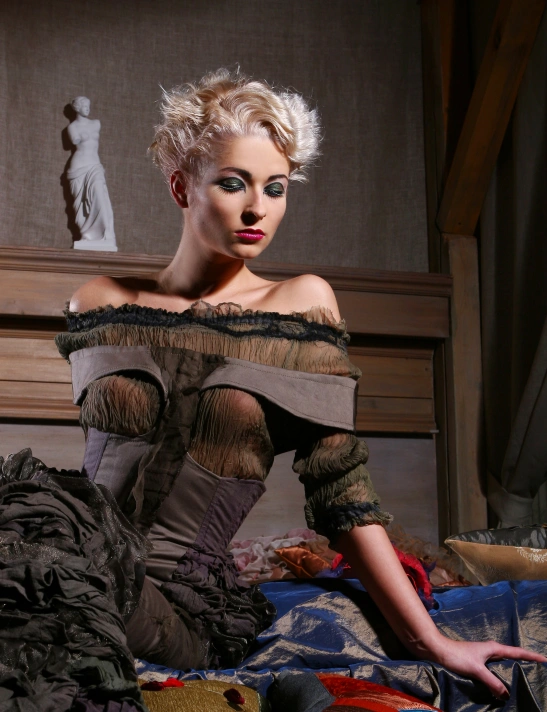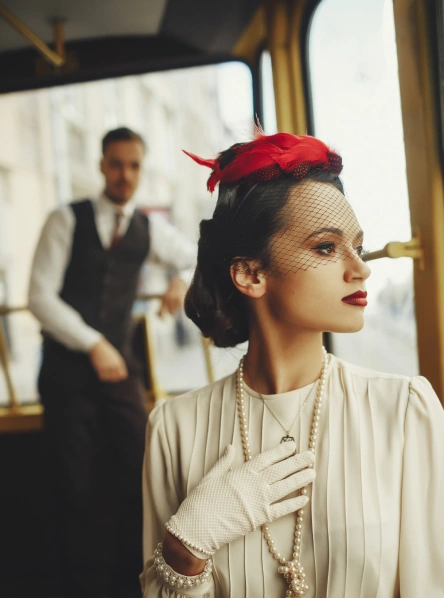The Return of Vintage
Why Retro Defines Modern Luxury Fashion
by Peter Davis
In the ever-evolving world of fashion, trends often mirror a cyclical dance—what once was old becomes new again. Today, a remarkable resurgence in vintage fashion underscores this phenomenon. From classic silhouettes to iconic prints, vintage-inspired pieces have found a renewed presence in modern luxury fashion. But what fuels this retro renaissance, and why have luxury brands embraced it with such fervor? A deeper look reveals a confluence of cultural, environmental, and economic factors that place vintage fashion at the heart of contemporary style.
by Peter Davis
One of the most profound drivers of vintage fashion’s resurgence is nostalgia. In uncertain times, people often find comfort in revisiting familiar eras, drawing strength from the aesthetic and cultural markers of a perceived simpler time. Vintage fashion provides a tangible connection to these moments, whether it’s the elegance of 1950s couture, the rebellious energy of 1970s punk, or the playful exuberance of 1990s streetwear.
Luxury brands have capitalized on this sentiment by reinterpreting vintage aesthetics for modern audiences. Gucci, under Alessandro Michele, has leaned heavily on 1970s influences, blending bold patterns, oversized sunglasses, and retro tailoring with contemporary elements. Similarly, Prada’s archival revivals bring back the house’s iconic nylon bags and sleek minimalism from the 1990s, proving that the appeal of these designs transcends decades.
Sustainability has become a pivotal issue in the fashion industry, and vintage fashion plays a critical role in addressing it. As consumers grow increasingly aware of the environmental toll of fast fashion, they are turning to vintage and pre-loved pieces as eco-friendly alternatives. The reduced demand for new production not only conserves resources but also highlights the enduring quality of craftsmanship in earlier eras of fashion.
Luxury brands have responded by incorporating sustainable practices into their operations, often drawing inspiration from vintage fashion. Collections like Louis Vuitton’s upcycled “LV Upcycling” and Stella McCartney’s use of regenerated materials underscore the compatibility of luxury and sustainability. Additionally, the rise of platforms such as Vestiaire Collective and The RealReal has elevated vintage luxury into a thriving secondary market, where rare and sought-after pieces fetch premium prices, reinforcing the notion that vintage is not just environmentally conscious but also a sound investment.
Vintage fashion is synonymous with exceptional craftsmanship, a value that aligns seamlessly with the ethos of luxury brands. The intricate detailing, high-quality materials, and impeccable tailoring of vintage pieces serve as benchmarks for contemporary design. In a world increasingly dominated by mass production, these attributes resonate deeply with consumers seeking authenticity and exclusivity.


Hermès, for example, has long been celebrated for its heritage designs and enduring commitment to craftsmanship. The brand’s iconic Birkin and Kelly bags, often passed down through generations, exemplify how vintage pieces can become timeless symbols of luxury. Similarly, Chanel’s tweed jackets and quilted handbags have retained their relevance for decades, reinforcing the value of investing in classic designs.
The influence of pop culture and celebrities cannot be overstated in driving the vintage trend. Red carpet appearances featuring vintage couture have become increasingly common, with stars like Zendaya, Kim Kardashian, and Rihanna donning archival pieces that make bold statements. These moments not only spotlight the artistry of vintage designs but also create a sense of rarity and exclusivity—hallmarks of luxury fashion.
The intersection of social media and vintage fashion further amplifies its appeal. Platforms like Instagram and TikTok showcase a new wave of influencers and fashion enthusiasts curating vintage looks that blend seamlessly with modern styles. This digital visibility has democratized access to vintage fashion while simultaneously enhancing its desirability among younger generations.
Luxury brands have not merely observed the vintage trend from the sidelines; they have actively incorporated it into their strategies. Collaborations with vintage curators and limited-edition reissues of archival designs allow brands to tap into the growing demand for retro aesthetics while maintaining their exclusivity. Dior’s reintroduction of the Saddle Bag and Fendi’s revival of the Baguette exemplify how iconic designs can be seamlessly reimagined for contemporary audiences. These relaunches often come with modern updates, such as new materials or colorways, that bridge the gap between nostalgia and innovation.
Additionally, the expansion of brand archives and museum-like exhibitions—such as Gucci’s Garden in Florence and the Chanel exhibitions in Paris—allow luxury houses to celebrate their heritage while creating immersive experiences that captivate consumers. These initiatives not only elevate the brand’s legacy but also reinforce the cultural significance of vintage fashion in the luxury domain.
The revival of vintage fashion transcends borders, with distinct interpretations emerging across different regions. In Europe, where many luxury brands have their roots, vintage fashion is deeply tied to heritage and tradition. Parisian markets like Marché aux Puces and London’s Portobello Road are hubs for discovering timeless pieces that reflect the rich history of European fashion.
In the United States, vintage fashion has taken on a more eclectic and individualistic character, influenced by Hollywood’s golden age and the countercultural movements of the 20th century. Brands like Ralph Lauren and Levi’s frequently draw on Americana themes, blending nostalgia with contemporary sensibilities.
Meanwhile, in Asia, the demand for vintage luxury has surged among younger consumers. Countries like Japan and South Korea have cultivated a deep appreciation for retro aesthetics, with curated vintage stores and designer resale platforms thriving in cities like Tokyo and Seoul. The meticulous attention to detail in Japanese craftsmanship resonates with the values of vintage fashion, further fueling its popularity.
While the rise of vintage fashion is undoubtedly impactful, it is not without challenges. The growing demand for vintage pieces has led to concerns about over-commercialization and the dilution of authenticity. Counterfeit items and unethical practices in the resale market pose significant risks to both consumers and brands.
To address these challenges, luxury brands must prioritize transparency and authenticity. Blockchain technology, for example, offers a promising solution for verifying the provenance of vintage pieces, ensuring that consumers can trust their purchases. Additionally, fostering partnerships with trusted resale platforms and vintage curators can help maintain the integrity of the market.
Looking ahead, the future of vintage fashion in the luxury sector appears bright. As consumers continue to seek meaningful connections to the past, vintage-inspired designs will remain a powerful tool for storytelling and brand differentiation. Moreover, the emphasis on sustainability and craftsmanship aligns with broader cultural shifts, ensuring that vintage fashion will play a central role in shaping the future of luxury.
The return of vintage fashion is not merely a passing trend but a profound statement about the values and aspirations of modern consumers. By blending nostalgia with innovation, luxury brands have successfully redefined retro as the epitome of contemporary elegance. As the world navigates a rapidly changing landscape, vintage fashion serves as a timeless reminder of the beauty and artistry that endure across generations. Whether through archival revivals, sustainable practices, or cultural reinterpretations, the retro renaissance continues to shape the narrative of modern luxury fashion, proving that sometimes, the best way forward is to look back.


